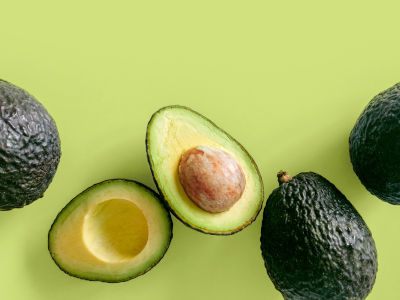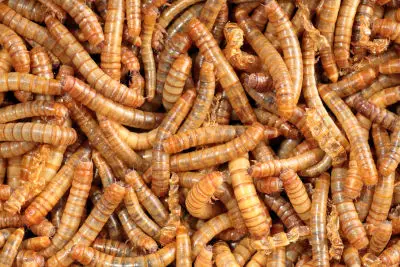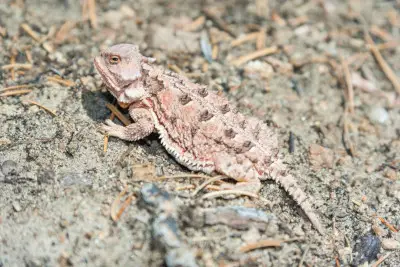What Do Pygmy Short-horned lizards eat? (Insects or Veg?)
If you are interested or researching pygmy short-horned lizards you may be wondering what they eat, and other facts about them…
What do pygmy short-horned lizards eat?
Pygmy short-horned lizards are classed as insectivores and mainly eat ants and beetles. Ants are mostly sufficient to provide most of their dietary needs. Most pygmy lizards have specialized teeth and a larger stomach capacity to store and digest prey which developed as an adaptation for eating ants.
| Are these foods dangerous for your Beardie? | |
| Avacado? Click here to learn, from this guide, if this food is dangerous |  |
| Superworms? Click here to learn, from this guide, if this food is dangerous |  |
So, now you know. But, what do pygmy short-horned lizard babies eat? Do they drink water? Why do bob their heads? keep reading for these answers, and much more…
What do baby pygmy short-horned lizards eat?
Click here to see the price, on Amazon #Ad
Baby pygmy short-horned lizards prefer eating ants and they make up 90% of their total diet. However, the younglings prefer to eat beetles while the adults like to mix and match and eat other insects such as beetles, grasshoppers, crickets, spiders, flies, honeybees, termites, and even larvae.
However, ants still constitute about 70% of their total diet. This is also why they appear fat and round.
Can you keep a horned lizard as a pet?
Horned lizards in general are not good in captivity as pets. And, the pygmy short-horned lizard, in particular, requires a license in some states in the United States because of its rarity.
Therefore, unless you are a professional lizard keeper it’s not the ideal pet lizard for most people. And, there are many other lizards, that are not so rare, that make great pets.
Are short-horned lizards poisonous?

A Pygmy Short Horned Lizard.
The short-horned lizard is not poisonous or venomous. However, many assume it is because of its impressive capability to shoot blood from its eye.
There are two main venomous lizards they are the Mexican Beaded Lizard and the Gila Monster lizard.
Do horned lizards drink water?
Click here to see the price, on Amazon #Ad
Horned lizards do drink water. But, they do not drink water from a bowl or free-standing offering. They use the scales on their back to catch water, this then runs towards their mouth as they open and close it.
It is a clever wat that nature has prepared them to catch water on the move. They are also known to lick dew and make use of precipitation in the air for meeting their water needs.
How long can a horned lizard live?
Horned lizards are expected to live for at least 5 years. However, like most averages, individual lizards could live slightly longer, or considerably less if attacked by their prey, health issues, etc.
Why do horned lizards bob their heads?
There are two main reasons why horned lizards bob their heads:
- Fend off other lizards
- Attract females
Fend off other lizards
The male horned lizard is quite territorial, like a lot of other lizards. So, to mark their territory they will bob their head to make the other males think twice about stepping into their zone.
Attract females
One of the main reasons for this territorial nature is to find a mate. Male horned lizards will also use this head bob to attract these females and increase their chances of mating.
What does the pygmy short-horned lizard look like?
Pygmy short-horned lizards do have some defining features of their own. Their skin is mainly shiny and they rather look like a miniature dragon. They are usually 1-3 inches long, which is shorter than most other lizards.
Body
Their bodies are flat, round, squat, and spiky. Most have a crown of long spines covering their head while shorter spines can be found dotting the body along the sides.
Spines
The spines jut out horizontally and are found on the back of the head. They are supposed and have short legs. The belly is usually smooth with no spikes. They have a short triangular tail.
Color
The color of the pygmy depends on the geographic area and usually ranges from grayish-tan to reddish-brown.
The color of most pygmies matches the color of the soil and the pebbles they live in. This helps them to blend in with their surroundings and be invisible to the naked eye.
Amidst the brown, tan, beige, white, gray, or black color, dark splotches can be found on their top body. These dark spots are usually in the form of two rows. The belly is cream or white in color.
How do pygmy short-horned lizards react when they are threatened?
When these short reptiles are threatened, their colors become more intense in an attempt to intimidate their enemies.
Well, if you haven’t seen the pygmy short-horned lizard, we are sure you will mistake it for a horned toad. The species has a rather inflated, fat sort of look which makes them look like a toad.
Where is a pygmy short-horned lizard natural habitat?
The Short Pygmy lizards can be found in mostly rocky or sandy flat plains, sagebrush or bunchgrass plains, or even in pine forests and juniper woodlands. They usually prefer areas with loose soil so they can easily burrow inside when they need to defend themselves.
They can be found in regions of semi-arid plains to mountains. They prefer more open areas, which is why they are more likely to be found in open, shrubby, or open wooded areas.
In the US, they can be found in the northwestern areas which include all regions extending from the northwestern border with Canada to northeastern California. This includes Northern Nevada, Southern Idaho etcetera.
Can a pygmy short-horned lizard tolerate the cold?
The pygmies are colder tolerant than other species. In case of too much vegetation, it makes it harder for them to burrow. They can be found in the upper, colder parts of the Cascade Mountains.
However, the secret might be hibernation. Studies show that most of these lizards that live in colder regions spend two-thirds of their lives in hibernation.
What size is a Horned Lizard?
The pygmy short-horned lizards usually range from 1.25-2.5 inches or 3.2-6.4 cm in length from snout to vent and 3.5-4 inches in length from snout to tail. The adult species are small enough to fit the palm of a small child.
These animals are quite lightweight as well, weighing only about 4.5 -5.6 grams whereas, the younglings weigh 1.8-2.5 grams. If you’re wondering how light that is, well, a dime weighs 2.2 grams.
Well, there is quite a reason these lizards are called pygmies. Even the largest adults are only about 4 inches in total length.
Are pygmy short-horned lizard diurnal?
Pygmy short-horned lizards are diurnal or daytime predators, i.e. they hunt during the day. You could almost call this species lazy as they usually take up a ‘sit and wait’ method of hunting.
They first bury themselves inside the soil and then wait for any unknowing prey to pass them by.
When do pygmy short-horned lizards breed?
During the winters, this species of lizard goes into deep hibernation. Mating only takes place after hibernation. Most of these lizards start emerging from their hibernacula from late March to June. The lizards are territorial and mark their territories as soon as they emerge.
They can often be seen fighting for their territory. This is because they use their territories to impress females. They advertise their territories to the female species by bobbing their heads to gain attention.
In case a male manages to impress a female, the female enters the territory and bobs her head along with him before mating with him.
Do pygmy short-horned lizards lay eggs?
Click here to see the price, on Amazon #Ad
Pygmy short-horned lizards do not lay eggs. What’s truly unique and shocking about this species is that they give birth to their live. Most other short-horned species and even most lizard species lay eggs.
However, they are still reptiles as their eggs hatch inside the mother’s body. When the species mate, their eggs are formed and they hatch inside the mother. After, hatching they remain inside the mother’s body for a period of about 2 months until the female gives birth (August to mid-September).
How many babies do pygmy short-horned lizard have?
Pygmy short-horned lizards give birth to 7-10 babies yearly. These neonates are very small and usually measure about 1 inch or 25 mm long.
Most scientists believe that the ovoviviparous (retaining eggs inside the body and bear the young babies) method of reproduction is a form of adaptation to cold weather.
Do female pygmy short-horned lizards mate yearly?
These lizards live in cooler climates than other species of horned lizards. Studies also show that most females do not engage in mating each year due to temperature constraints.
This is because the cold temperatures often result in a high infant mortality rate. So, females tend to refrain from reproducing each year as it would be useless and would only result in dead babies.
Are pygmy lizards easy to breed?
Pygmy short-horned lizards are quite easy to breed. However, they prefer privacy and generally like to mate right after hibernation. The male simply advertises his territory and if the female takes a liking to him, they mate.
As most conservation specialists advise against keeping them for pets, there is very little information on how to breed them in captivity.
What are pygmy short-horned lizard’s natural predators?
Their natural predators include snakes, magpies, ravens, and hawks. Although roadrunners, dogs, wolves, and coyotes hunt these lizards as well. Apart from this, larger lizards are found to eat these pygmy lizards as well.
Since they are small, they have a larger number of predators. Perhaps, this is why they utilize a larger number of defense tactics than other lizards.
What is the difference between the male and female short-horned lizard?
Like most animals, the females are much smaller than the males. The males are also found to have larger scales. During the breeding season, the difference is more pronounced as the males are found with a swollen base under the tail.
What is a pygmy short-horned lizard behavior like?
The pygmy short-horned lizard is a rather lazy species of lizard. It prefers to sit and wait for its food to come by rather than go out hunting. These are diurnal creatures, i.e. they perform most of their activities during the day.
They are most active from spring through fall and hibernate if it gets too cold. They mostly make burrows for themselves to hibernate in or hide inside rodent burrows.
They mostly thrive in colder environments and prefer a temperature between 60-80 degrees F. In the summers, they are most active in the morning when there are less heat and warmth. They prefer burying themselves in the soil if the temperature gets too hot or too cold.
Are pygmy short-horned lizards aggressive?
Like most lizards, the pygmy short-horned lizard is not aggressive. They mostly resort to aggressiveness when provoked.
Mothers are often protective of their young ones in the earliest ages. However, the pygmy lizard is actually known more for its defensiveness and the tactics it uses to defend itself.
These lizards rarely participate in territorial disputes but when they do, they tend to use their claws and teeth.
How does a pygmy short-horned lizard defend itself?
When confronted with predators, the pygmy short-horned lizard has a surprising number of defenses it uses. The first and most common is that they shimmy their body from side to side and hide their body in the loose sand so that the predators cannot find them.
01. Camouflage
Click here to see the price, on Amazon #Ad
They also use camouflage to their advantage. Since the color of their skin mostly resembles the color of the soil in that region, they successfully and seamlessly blend into their surroundings.
02. Sit Still
They usually sit still to avoid their predators from detecting them. Remaining motionless is another one of their defense mechanism.
03. Inflating their body
Another impressive defense mechanism they have adapted is inflating their bodies to twice their size. This way they resemble a shiny and spiky balloon, which most predators avoid.
04. Shooting blood
The short-horned pygmy lizards employ one of the most unique defense mechanisms in the animal kingdom, i.e. shooting blood from their eyes. The blood is shot from their ducts present in the corner of their eyes and the stream can often travel distances of greater than three feet.
The bloodstream successfully confuses its predators. The stream tastes bad as well, so a direct hit into the mouths of their predators can successfully indispose them. It might contain noxious chemicals as well that affect dogs, wolves, and coyotes.
How does a pygmy short-horned lizard shoot blood?
The mechanism for a pygmy short-horned lizard to shoot blood is quite simple, the lizard has two sets of muscles surrounding the major vein in the eye. They constrict these muscles to cut the blood flow back into the heart.
This results in the blood filling up the sinuses under a lot of pressure. By increasing the pressure, even more, the sinuses rupture resulting in a thin stream of blood that shoots very high and gar. This is known as auto-hemorrhaging.
What is pygmy short-horned lizard scientific name?
The pygmy lizards usually belong to the family called Phrynosomatidae which includes horned, spiny, tree, earless, fringe-toed, zebra-tailed lizards. They further belong to the genus ‘Phrynosoma’ which is related to all horned lizards and their species name is ‘Douglasii’.
Like most other animals, the scientific name of the short-horned lizards is actually a combination of their genus name and their species name.
So, their scientific name is actually Phrynosoma Douglasii. In more etymological terms, the term ‘Phrynosoma’ is actually Latin for ‘toad body’ which is a nod to their toad-like fat bodies and the fact that most folks mistakenly identify them as toads.
The term ‘Douglasii’ is an honorary term for the Scottish botanist David Douglas.
Are the pygmy short-horned lizards rare?
The pygmy short-horned lizards are actually found in abundance in regions of Northwestern US. If you live in some of the Northwestern states and wonder why you haven’t seen them often.
Well, this is mostly because they are excellent at hiding. Their sand-colored hides make it easy for them to hide in the soil. This might be why you have never seen these small lizards.
Apart from the Northwest, the pygmy short-horned lizard is rarely found in other locations. If you’re outside the US, chances are you might never get to see a short-horned lizard.
Although the short-horned lizard is extremely vulnerable to extirpation through colonization as their natural habitat is destroyed due to urbanization. They need soil to thrive and protect themselves, which can be hardly found in urban areas such as the Washington state.
They may also be found in regions of British Columbia that are colder and in the mountains as well.
Is pygmy short-horned lizard likely to be found as pets?
Click here to see the price, on Amazon #Ad
You might want to adopt these short-horned pygmy lizards as they are attractive and cute. However, we strongly advise you against bringing them home to make them your pets. Although they can make lovely pets, chances are you might not be able to provide for them as well as Mother Nature could. This is often why they do not live for long during captivity.
They need a special diet of ants to sustain themselves. However, the amount is usually too high for you to provide. So, it gets very difficult to feed them as they might go under malnutrition.
This is why the Oregon Department of Fish and Wildlife deems these lizards as protected. SO, you cannot take these lizards from the wild to your home. It is against the law to do so.




